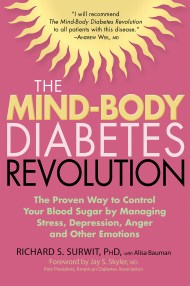Promotion
Use code MOM24 for 20% off site wide + free shipping over $45
The New Glucose Revolution for Diabetes
The Definitive Guide to Managing Diabetes and Prediabetes Using the Glycemic Index
Contributors
By Dr. Jennie Brand-Miller, MD
By Stephen Colagiuri, MD
By Alan Barclay, PhD
By Kaye Foster-Powell, BSc, MND
Formats and Prices
Price
$25.99Price
$33.99 CADFormat
Format:
- Trade Paperback $25.99 $33.99 CAD
- ebook $11.99 $15.99 CAD
This item is a preorder. Your payment method will be charged immediately, and the product is expected to ship on or around May 31, 2007. This date is subject to change due to shipping delays beyond our control.
Also available from:
Genre:
- On Sale
- May 31, 2007
- Page Count
- 512 pages
- Publisher
- Da Capo Lifelong Books
- ISBN-13
- 9781569243077
Newsletter Signup
By clicking ‘Sign Up,’ I acknowledge that I have read and agree to Hachette Book Group’s Privacy Policy and Terms of Use













